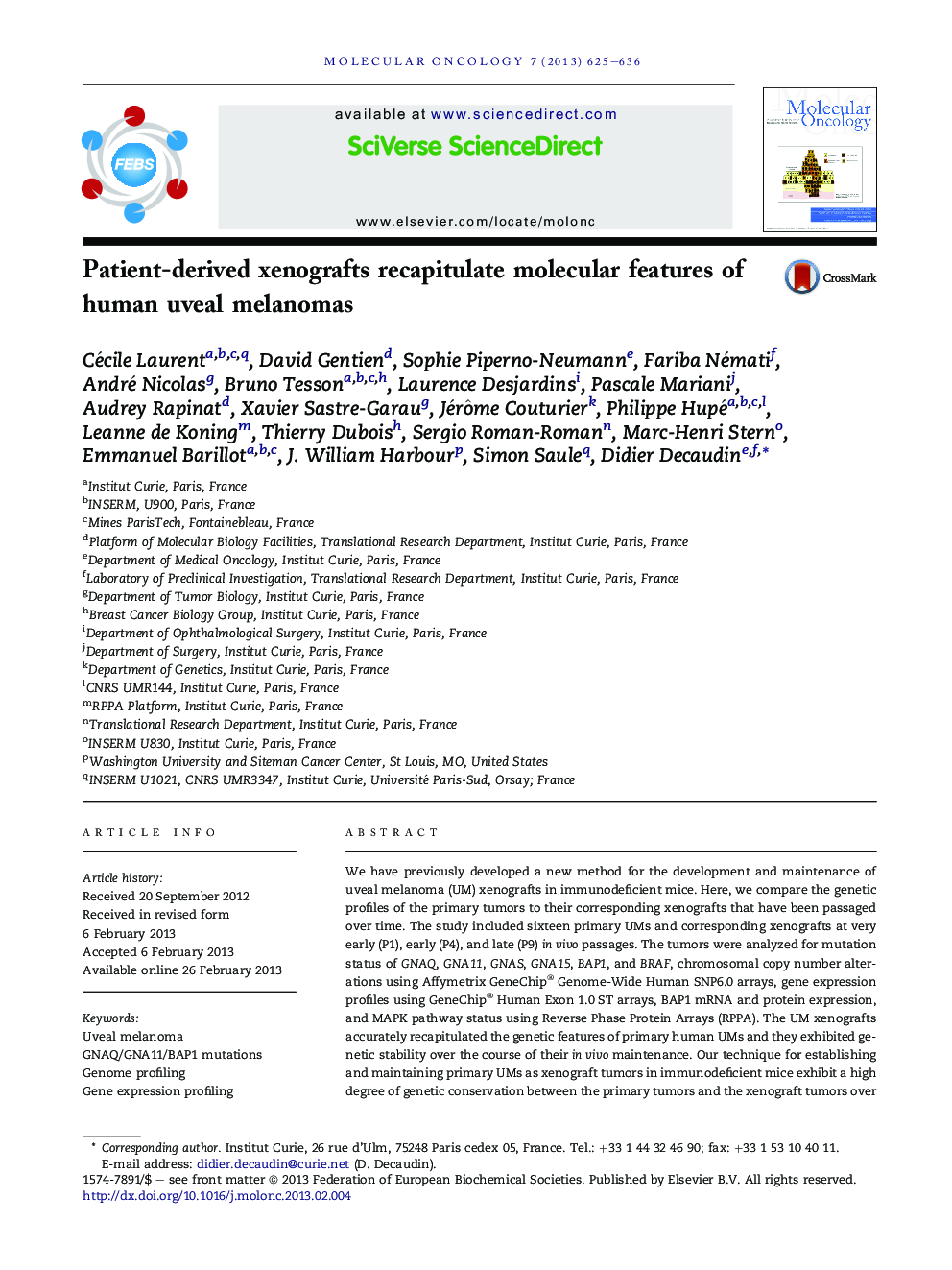| Article ID | Journal | Published Year | Pages | File Type |
|---|---|---|---|---|
| 2145728 | Molecular Oncology | 2013 | 12 Pages |
We have previously developed a new method for the development and maintenance of uveal melanoma (UM) xenografts in immunodeficient mice. Here, we compare the genetic profiles of the primary tumors to their corresponding xenografts that have been passaged over time. The study included sixteen primary UMs and corresponding xenografts at very early (P1), early (P4), and late (P9) in vivo passages. The tumors were analyzed for mutation status of GNAQ, GNA11, GNAS, GNA15, BAP1, and BRAF, chromosomal copy number alterations using Affymetrix GeneChip® Genome-Wide Human SNP6.0 arrays, gene expression profiles using GeneChip® Human Exon 1.0 ST arrays, BAP1 mRNA and protein expression, and MAPK pathway status using Reverse Phase Protein Arrays (RPPA). The UM xenografts accurately recapitulated the genetic features of primary human UMs and they exhibited genetic stability over the course of their in vivo maintenance. Our technique for establishing and maintaining primary UMs as xenograft tumors in immunodeficient mice exhibit a high degree of genetic conservation between the primary tumors and the xenograft tumors over multiple passages in vivo. These models therefore constitute valuable preclinical tool for drug screening in UM.
► Uveal melanoma (UM) prognosis is poor due to a high risk of metastatic disease. ► New therapies are needed to improve the outcome. ► We have developed and characterized a panel of primary human UM xenografts. ► These models closely imitate many important genetic aspects of the human disease. ► They are valuable preclinical tool for drug screening and study tumor progression.
